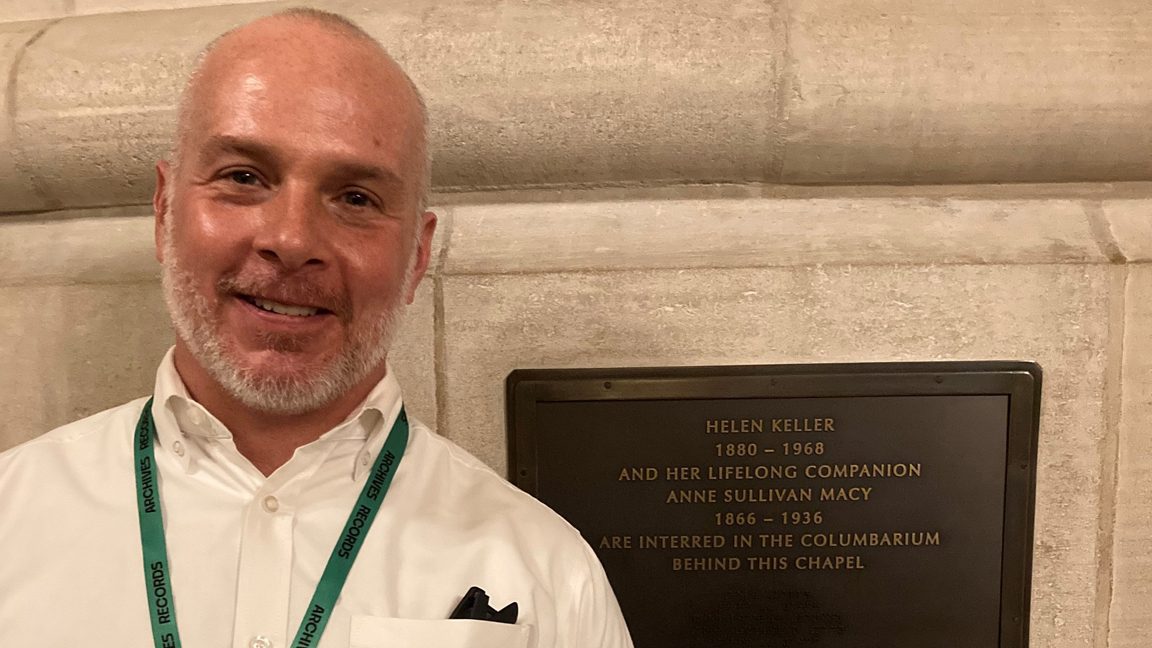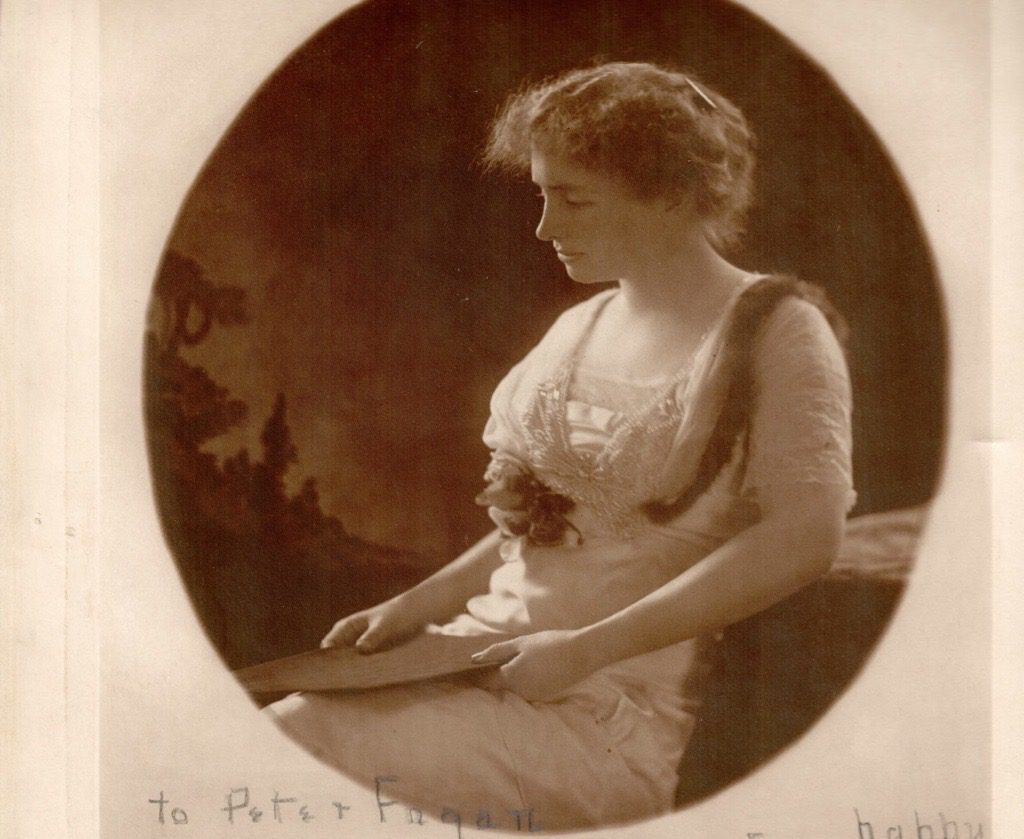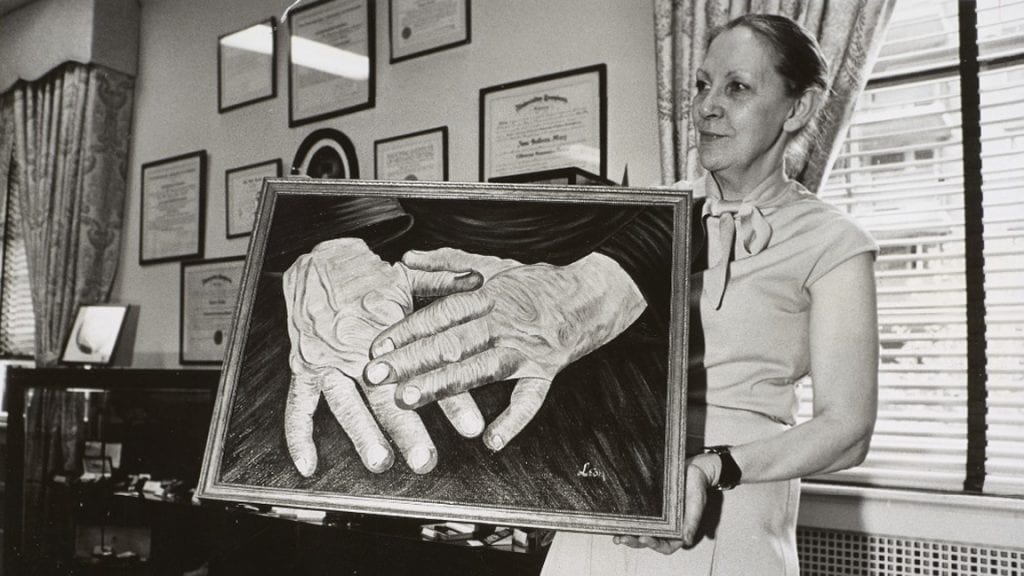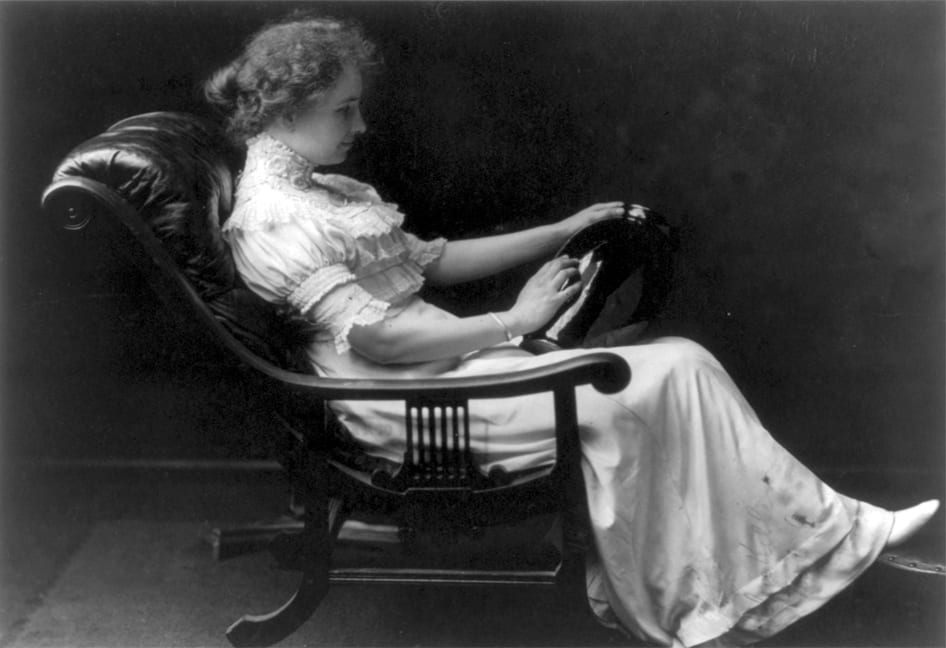To ensure gift delivery by 12/25, please place orders via UPS shipping no later than 12/17.
CloseHelen Keller’s Final Resting Place

This year’s meeting of the Society of American Archivists was in Washington DC, which allowed me the chance to make an important visit. I toured the Washington National Cathedral to visit Helen Keller’s final resting place.
My guide began by showing me a sculpture of Helen Keller high up on a corbel close to the ceiling in the Cathedral. It was created as part of the “Great Modern Christians” series, along with other sculptures such as Albert Schweitzer and Pope John XXIII. Created in 1969, it was part of the construction of the Cathedral, which initially lasted from 1909 to 1990. In the early 1980s, the Cathedral had a plaster copy of the sculpture made for visitors who are blind or low vision to feel.
After viewing the sculpture, we went downstairs to the Chapel of St. Joseph of Arimathea. On a wall was a bronze plaque. Bearing both raised letters and braille, it states, “Helen Keller (1880-1968) and her lifelong companion Anne Sullivan Macy (1866-1936) are interred in the columbarium behind this chapel.” The current plaque is from 2019. The plaques are replaced fairly often since visitors touch the braille, and the current memorial is much less worn than many of the photos that might be found online. On the opposite wall a similar plaque was mounted for Matthew Shepard, a victim of a 1998 hate crime. Matthew’s family insisted that his memorial also include braille, so that anyone visiting Helen could also read his memorial.
The columbarium is normally closed to the public, but I was allowed in for a special tour. Even I, however, could not take photos. On a small rectangular piece of marble covering the crypt were three names: Anne Sullivan, Helen Keller… and Mary Agnes Thomson. “Polly” Thomson, Helen’s companion of 45 years, is buried along with her friends Anne and Helen. While I was embarrassed that I was not aware of this, my guide asked me if I knew who “Mary” was. It had been a surprise to find all three companions together, but as I would soon find out, it was well documented in the Helen Keller Archive.
Upon my return from Washington, I decided to research exactly how all three ended up in the National Cathedral. Helen made the decision, and perhaps made it quite early in both her life and in the life of the Cathedral. She visited the Cathedral in 1912 and wrote Anne a lengthy letter about how impressive it was. Helen was allowed to climb a ladder and feel the ceiling and columns. After Anne’s passing in 1936, another note states that Helen asked that Teacher be placed in the columbarium, and that “… if Helen wants it, she should have it …”
Additionally, the note shows that Helen provided an inscription for Anne’s urn reading, “Blessings upon the receptacle of the precious dust which my heaven-sent teacher wore as a garment as she wrought her miracle of liberation thru Him who is the Lord of Life and Love.” While I knew that Anne might have been the first woman laid to rest at the Cathedral, Helen wrote to Bishop Freeman that “It makes me proud to know that Anne Sullivan Macy is the first woman thus to be recognized for her own achievements.”
Further, Helen seems to have been a very rare exception to the rules when she was accepted for placement in the columbarium long before her actual passing, since she knew that she wanted to be with Anne. A 1959 copy of Helen Keller’s will further states that Polly had purchased for Helen an identical urn to Anne’s so that Helen could be placed alongside Anne when the time came. Polly added to the will that her own wishes were to be cremated, and that her friends do with her ashes as they see fit. It would seem, then, that a year later, Helen placed Polly in the same crypt as her teacher. Helen joined her friends at the National Cathedral eight years after that.
Share this article.
Related articles

A Sad Episode
In August of 2023, the AFB Helen Keller Archive received an extraordinary message; the grandchildren of someone who seemed to...

How the Helen Keller Archive Began
When I started working in the AFB (American Foundation for the Blind) Helen Keller Archive at APH in October of...

The Chair Went Out the Window
Museum objects and their stories are codependent. The artifact is the real deal. After all, it was there when history...
